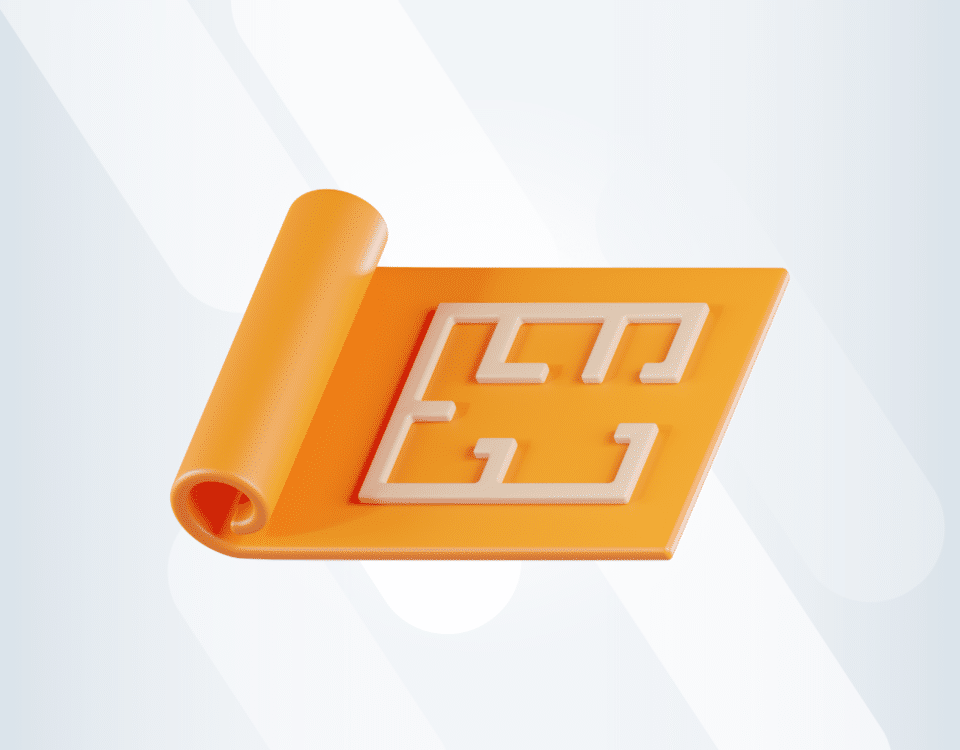Outdated Software in Construction: Why Legacy Systems Are Bad for Your Company?
One of the most predictable things about the modern world is constant change - and it is evident in the development of new technology. Holding on to outdated technology does not only hold back your growth - it can also harm your business. Check out the article to see why legacy systems cost you more than you can afford.
The world is constantly changing - and there is no better example of rapid development than technology. We observed a true revolution during our lifetime as we came from brick-sized cell phones to having a literal computer in our pockets, with access to the whole world at our fingertips. And that’s just one example.
Although the construction industry has been resistant to changes and new technologies for a very long time, companies worldwide are coming to terms with the need for digital transformation and the use of modern construction methods to stay competitive on the market. But at the same time, the adoption of new technologies is both time and money consuming and requires a lot of effort for the whole team, which has to get used to working in a new system that can cause frustration.
That’s why it’s not surprising that businesses tend to hold onto outdated legacy systems for far too long - in the name of the rule: “if it’s not broken, don’t fix it”. But in this article, we will show you how holding onto the old systems for longer than necessary can cost you more and bring much more trouble than if you were to go through the change of adopting new solutions.
What Are Legacy Systems?
Legacy system is any technology, software or hardware that has been outdated in terms of its function by the introduction of newer technology, but is still used within a company or organisation.
Legacy systems might be a state-of-art technology when the company adopts them to serve its purposes. Still, if the software is not being developed in response to the changing world and company’s needs, its functions are bound to become insufficient and may cause more problems than solutions.
Legacy Systems in Reality
A study by Avanade revealed that, on average, 31% of technology within organisations is made up of legacy systems, even though 80% of respondents believe that not modernising IT systems will negatively impact the long-term growth of their organisation. And they are not mistaken - it’s estimated that even up to 90% of businesses are being held back in terms of growth and enhanced efficiency due to old technology.
If it’s so evident that legacy systems bring more harm than good, why are some companies still reluctant to change? There are numerous reasons but the most prominent among them are:
Familiarity and fear of the unknown
Even though legacy systems may not be the most efficient and can cause some disruptions as long as it’s working, people don’t want to change their ways and learn totally new tools and processes that would come with the latest technology.“No time” for revolution
Running a company is complicated enough without carrying out a total technology transformation. Companies might resist implementing a new system simply because it feels like there’s never a good time to go through the painful process of change.High costs of new technology
New investments come with new expenses. Other than that, the company has probably invested in a legacy system and doesn’t want to see this investment “go to waste” by replacing it with new technology.
All of the reasons mentioned above are understandable - changes are usually perceived as an unpleasant process. The point is, we need to make them when necessary to achieve better results. The cost of change is justified when the cost of keeping the status quo is higher. Now, let us show you why holding onto legacy software costs you too much to resist change!
The Costs of Keeping Legacy Software
- 01
Security Risk
Data security is one of the cornerstones of a stable and safe company environment, crucial for you and your clients. Outdated software can make your company more vulnerable to cyber attacks by not adapting to the changing threat landscape.
Additionally, there is a higher risk of data loss due to the lack of automatic backups.
It is also worth mentioning that there are discussions taking place globally about introducing further regulations concerning data protection. Therefore, if your software provider does not offer updates or product development at some point in the future, you might have severe problems with compliance requirements. - 02
Incompatibility - lack of integrations
Legacy systems are often incompatible with the newest solutions - or they will be soon because the world of technology is constantly in motion - if you don’t follow, you get left behind. It will probably mean that if you want to start using new, more modern tools for parts of your process, you will not be able to integrate that with the legacy solution, and you will risk data duplication or data loss, which takes us to the next point.
Additionally, construction companies are increasingly adopting modern methods of construction (MMC) as they can improve quality, lower costs and enhance efficiency. Even if you are not using them now, the competitive nature of the construction market may make you consider them in the long run. A legacy system may not be able to support these new methods. - 03
Poor data management
The lack of integration between legacy software and the newest technologies may force your company to use multiple tools, which would inevitably lead to data duplication. But the problems don’t stop here - unintegrated tools mean using multiple sources of information to run your business processes and making crucial decisions, which can lead to serious disruptions and missed opportunities. Read about the importance of proper information flow - Golden Thread for Your Business.
The other problem is that we can observe the trend of using enormous amounts of business data to gain valuable insights and support business decisions with reliable information. Outdated software that is no longer developed will most likely not be able to process this amount of data because it was created when big data wasn’t widely used. - 04
Lack of mobility
This is especially important for companies with employees working in the field - which means that it’s crucial for the construction industry. If your field employees can use mobile devices (like laptops, tablets and smartphones) to stay connected to all the data in your system, check the stage of a project, asset booking, schedules or any other information they need, their performance and the overall efficiency will massively improve.
Outdated legacy systems cannot always support remote access, which negatively impacts your team’s productivity and revenue. - 05
Higher failure rates
An outdated system that the provider no longer supports has an increased risk of system errors, lags and breakdowns that may not be quickly restored. The consequences of such problems can be daunting, especially for smaller businesses. It can give way to additional costs of IT recovery, lost productivity, low morale within your team due to stress and frustration, and paralysis of project execution. - 06
No development or support path
One of the most significant issues with legacy systems is that what you have now will probably never change. If you lack some functionality or solution - it will probably never exist. The only option you might have is customising it externally, however this is not only expensive but it’s also a temporary solution, which might as well be prone to errors. Whatever happens on the market, with technology or the legal landscape, you cannot adjust your system to the new situation - instead, you will have to look for workarounds and add new tools that will impact your productivity and make the process more vulnerable. - 07
Inhibits business scalability and growth
With legacy systems, there are no chances for development within the system, there is also little space for your company’s development. There is a big chance that your legacy software will not be able to support your business growth, increased capacity or new processes.
Scalability and the ability to adjust to the changing market’s requirements and new opportunities and challenges is crucial in building a resilient business. And, of course, you will want your business to grow. That’s why you need a system that will keep up with you and your needs. Legacy systems are not able to do so.
Read about the importance of business scalability!
The Overall Cost of Keeping Legacy Systems?
The cost is not only how much you pay for it - if you want your business to be successful and thriving in the changing and competitive market, you need the right tools to support you.
Holding onto outdated legacy systems makes you fall behind your competition by limiting your ability to react to the market, new technologies, opportunities and challenges.
After all, the most significant setback of legacy systems is that they stiffen your business and make you not future-proof.
Innovative technology of the future is what keeps the industry going and companies thriving!
Interested in our solutions?
You might also like
February 29, 2024 • 7 min read
Utilizing the human-first approach to construction projects to drive higher results.
July 3, 2023 • 6 min read
8 Best Construction Drawing Management Software (2023): A Comprehensive Guide
Find all the information you need about the construction drawing management software tools available on ...June 14, 2023 • 6 min read
The 11 Best PlanGrid Alternatives (2023)
Looking for a great alternative to PlanGrid software? Check out the 11 best construction software tools ...June 14, 2023 • 4 min read
How to win at CIS 340 and make taxes a breeze
CIS 340 is a legal obligation for contractors. But getting it right isn’t straightforward. Want ...





